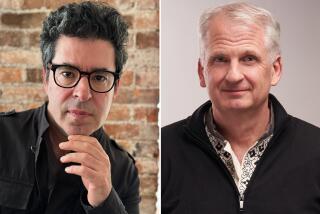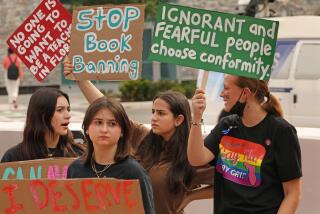The freedom on which all others depend
When I once gave a lecture in England on religious freedom in the West, a Muslim scholar asked why anyone should care. The answer, I thought, was that the material and cultural progress of a nation depends on the creation and maintenance of human freedom, and that in turn depends on religious freedom. If you think the state should enforce on others your views about God and his demands, it is most unlikely that you will allow the state to recognize freedom of speech or the press or an unfettered right to scientific inquiry.
The primacy of religious freedom is made evident by the fact that in the West, the struggle over religious freedom predated by about three centuries any discussion of free speech or a free press. Until the first issue was settled, the second would have little meaning. How can people argue over who is to rule if they must first grant the right to rule to people of a chosen faith?
In much of the Muslim world, religious freedom has not emerged, or the tumult caused by the rivalry between sects -- for example, Shiites and Sunnis -- has paved the way for totalitarian regimes to grab power. Any of these outcomes, whether it is religious intolerance, state-linked religious struggle or military dictatorship, holds back human and scientific development.
In the West, religious freedom did not arise until more than 1,500 years after Christâs death. Christianity in the New Testament makes scarcely any claims for enforced religious orthodoxy, but once the religion had been embraced in the 4th century by the Emperor Constantine, its leaders and their political allies began to demand it. Some people were converted to the faith by the sword, and alleged heretics were burned at the stake. To achieve religious freedom without abandoning religious belief became in time the most difficult task the West faced.
Perez Zagorin, an emeritus professor of history at the University of Rochester in New York, has provided an explanation for this change in his new book, âHow the Idea of Religious Toleration Came to the West.â Freedom came, he says, because thoughtful and brave writers argued for it. He discusses many names familiar to Americans, such as Erasmus, John Milton, John Locke and James Madison, but he also brings to our attention 16th and 17th century religious thinkers about whom most people have never heard, such as Sebastian Castellio, Pierre Bayle and Dirck Volckertszoon Coornhert.
At this point, you may decide not to read a book devoted to intellectual history, especially if it discusses writers hardly anyone has encountered. That would be a mistake, because this book is never dull and often exciting. It offers a gripping account of the struggle over religious freedom between Frenchmen John Calvin and Castellio. Calvin, a minister, became the founder of the Reformed Church theocracy that ran Geneva; Castellio, a teacher in Basel, publicly attacked Calvin for authorizing the execution of a supposed heretic. Calvin called Castellio a man who âvomits venom.â Castiello wrote, âTo kill a man is not to defend a doctrine, it is to kill a man.â
Their arguments are deeply important, but there is a rival explanation for religious freedom that Zagorin dismisses out of hand. It was best stated by British historian Herbert Butterfield, who said that toleration was âthe last policy that remained when it had proved impossible to go on fighting any longer.â One faith might attempt to dominate another, but if the nation was torn apart by this struggle, wise statesmen would in time realize that the only way to end the struggle was for toleration (and, in time, true freedom) to be embraced.
The best evidence that political judgment played an important role in the rise of religious freedom is where it first emerged. All Europe was mired in religious strife, but only in certain places, England and to an extent the Netherlands, did toleration first gain a foothold.
Religious differences caused the English civil war in the 17th century, as Puritans, led by Oliver Cromwell, unseated, then executed an Anglican king. Though Cromwell was a stern believer in his own faith, he was wise enough to see that faith alone could not run the country, so he urged Parliament to grant religious liberty to âall who fear God,â provided only that they did not disturb the peace, and he began to readmit exiled Jews.
Cromwellâs wisdom was proved by what happened next. Charles II recovered the throne and restored the Anglican faith as the dominant religion; after he died, his son, James II, became king and brought his allegiance to Roman Catholicism. For many reasons, including religious ones, the English could not accept his rule, and many conspired to invite William of Orange to invade. His victory in 1688 led to the exile of James II, and a Protestant king was restored to the throne. The English must have noticed that Williamâs wife, Mary, though the daughter of Catholic James II, was herself a Protestant, and thus must have begun to wonder how they should cope with religious differences if a father and his daughter could not get the matter straight.
In 1689, Parliament passed the Toleration Act, which allowed most dissident Protestant sects to practice their own religion. It still left Catholics and Unitarians vulnerable to the law, but English administrative practice by and large left them alone. England, in that mysterious way that characterizes so much of its legal system, has an established church led by an archbishop appointed by the prime minister, but increasingly gave freedom to every sect. As late as the middle of the 19th century, people could not attend Oxford or Cambridge universities without signing the Church of Englandâs âThirty-Nine Articles.â In time, even that restriction was eliminated.
The Netherlands had to manage the struggle between its Catholic and Calvinist regions. The campaign to free the Netherlands from Spanish rule reflected a desire for economic and religious independence. The Dutch ports were able to capture a large share of world trade, an opportunity enhanced by suspending religious persecution. So valuable were Jews and Huguenots that by the 17th century, the Dutch had accepted those displaced from other countries. Calvinists were split into two wings, the Dutch Reformed Church and the Remonstrants, and of course Catholics lived there, a fact that led the Dutch to permit everyone to choose his own religion. As a practical matter, however, one religion, the Dutch Reformed Church, enjoyed special privileges. Its ministers were paid by the state, and its members could join the civil service; ministers of other denominations were paid by their own congregations, and their followers were kept out of the state bureaucracy. Yet the Dutch Reformed Church had no religious monopoly; not only could other denominations exist but Calvinist ministers also were obliged to baptize and marry any citizen who asked for these services, and in many communities public officials turned a deaf ear to church demands that they crack down on taverns and dances. By the standards of the times, the country was sufficiently free that many dissident writers, even ones from England and Scotland, lived there to enjoy intellectual protection. In 1795, the Dutch abolished all privileges for the Dutch Reformed Church and religious freedom became entirely secure.
Zagorin acknowledges these facts, as when he writes that toleration often emerged âto avoid the still greater evil of civil conflictâ and that freedom for Protestants and Catholics was a âprudential concession and political expedient rather than an act of principle.â Many of the writings to which Zagorin gives such careful attention were written simultaneously or even after the political struggles that gave rise to religious freedom. John Lockeâs famous âA Letter Concerning Tolerationâ was not published until 1689, long after Cromwell had set in motion the tolerance movement and the same year that the Toleration Act was passed. John Miltonâs âAreopagitica,â though published in 1644, was not widely read at the time and âmade little impression upon the general discussion of ... toleration.â
By contrast, France, Sweden and the German principalities made little progress toward religious freedom precisely because they did not need to find a way to manage powerful religious differences.
A full examination of religious freedom requires a book that marries Zagorinâs brilliant intellectual history with an equally knowledgeable account of the political consequences, not only of theories of freedom but also of the needs of governance. A good place to start is in the United States, where religiously opposed colonies had to find a way to live together in a sovereign state. Roger Williams, about whom Zagorin has much to say, founded a religious free state, Rhode Island, but most Colonies had different religious codes. Maryland was created as a home for Catholics and Pennsylvania as one for Quakers, while Anglicans ruled in several Southern Colonies. Six required their voters to be Protestants, and five had an officially established church. Massachusetts punished, and occasionally hanged, Quakers.
To form the 1789 union, the religious issue had to be clarified. It was, by silence. The original Constitution contained no religious provisions other than a ban on religious tests for office. Though Madisonâs writings on religious freedom no doubt helped produce this result, political necessity also played a role. There could be no union if one religion had a dominant position. The 1st Amendment to the Constitution guaranteed the âfree exerciseâ of religion and banned any law ârespecting an establishment of religion.â The amendment, albeit in rather obscure language, effectively prevented the national government from establishing a church.
There is little evidence that the members of Congress and state legislatures who voted for this amendment meant to discourage government aid to religion generally, but they clearly did not want an established church. Not long after the Constitution came into force, the country began a long struggle over what âevenhanded government aidâ really meant, as people argued over whether children could be banned from attending religious schools. It took more than 150 years before public opposition to Catholicism faded.
The pope was widely described as âthe antichrist,â and Rome as the âscarlet harlot.â In the 1830s, 1840s and 1850s, Protestants burned down Catholic churches and convents. By the late 19th century, so-called Blaine Amendments had been added to many state constitutions that reaffirmed religious freedom and made it illegal for public money to go to religious schools. In some states, the ban extended to public funds for orphanages controlled by a religious body. Paul Blanshard, a popular anti-Catholic writer in the late 1940s and 1950s, urged, among other things, that parochial schools be inspected regularly to ensure that textbooks and teachers did not argue âfor the benefit of the [Catholic] hierarchy.â
Zagorin does not take up the American experience; if he did, he surely would have to combine his analysis of important writers with the realities of politics. These writings, I think, would turn out to be a bit less important than the 1960 election of John F. Kennedy as the first Catholic president, an event that by and large ended overt attacks on religion.
He also does not deal with the issue of utter religious freedom: Do people suffer if no support whatsoever goes in an evenhanded way to churches? As Philip Hamburger writes in his masterful book âSeparation of Church and State,â âit remains unclear whether powerful yearnings for purity and transcendence are less dangerous when focused on this world than on another,â for religion is one force (there are others) that reinforces communal beliefs.
These are all matters that ought to be taken up in new books. Meanwhile, the best introduction to the ideas of religious freedom can be found in Zagorinâs volume.
More to Read
Sign up for our Book Club newsletter
Get the latest news, events and more from the Los Angeles Times Book Club, and help us get L.A. reading and talking.
You may occasionally receive promotional content from the Los Angeles Times.








